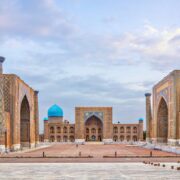
Pooja, an integral part of Hindu culture and spirituality, embodies a profound connection between devotees and the divine. Rooted in ancient traditions and scriptures, pooja rituals are a way to express reverence, seek blessings, and cultivate spiritual discipline. Central to these rituals are various sacred pooja items, each carrying symbolic significance and playing a crucial role in facilitating a sacred atmosphere conducive to worship.
Understanding the Significance of Pooja Items
Pooja items are not just objects used during rituals; they are considered conduits for spiritual energies and expressions of devotion. Each item serves a specific purpose, symbolizing aspects of the divine and enhancing the efficacy of prayers and offerings. Understanding the significance of these items enriches the spiritual experience and deepens the connection with the divine.
1. Idols and Statues
Idols, or murtis, of deities form the focal point of many pooja rituals. Crafted with precision and artistic skill, these statues represent various gods and goddesses, each embodying unique qualities and attributes. The presence of an idol during pooja is believed to invite the deity’s divine presence into the worshipper’s home or sacred space. Devotees offer flowers, incense, and sacred chants to the idol, symbolizing reverence and devotion.
2. Lamps (Diya)
Light holds profound symbolism in Hinduism, signifying the presence of knowledge, purity, and enlightenment. Diyas, traditional oil lamps, are lit during pooja rituals to illuminate the surroundings and dispel darkness, both literal and metaphorical. The flickering flame of the diya symbolizes the eternal presence of the divine and is considered auspicious. Lighting a diya is accompanied by prayers for illumination and the removal of ignorance.
3. Incense Sticks (Agarbatti)
Incense plays a crucial role in creating a sacred atmosphere during pooja. Burning incense sticks, or agarbattis, releases fragrant smoke that is believed to purify the environment and elevate spiritual vibrations. The scent of incense is pleasing to the deities and is said to carry prayers to the heavens. Devotees use incense to invoke a sense of tranquility and focus during meditation and prayer, enhancing the overall spiritual experience.
4. Sacred Threads (Raksha Sutra)
Sacred threads, such as the raksha sutra or kalava, are symbols of protection and blessings in Hindu rituals. These threads are often tied around the wrist during ceremonies, marking the wearer as under divine protection. Made from cotton or silk, these threads are sometimes adorned with turmeric or vermilion powder, signifying auspiciousness and devotion. The tying of the sacred thread is accompanied by prayers for the well-being, prosperity, and spiritual growth of the wearer.
5. Camphor (Kapoor) and Ghee
Camphor and ghee are essential items used during aarti, a ritual of waving a lit lamp or camphor before the deity. Camphor, when ignited, burns without leaving residue, symbolizing the complete transformation from material existence to spiritual purity. Ghee, clarified butter, is used in lamps and as an offering, symbolizing purity, nourishment, and the offering of oneself to the divine. The aroma of camphor and ghee during aarti is believed to purify the atmosphere and attract divine blessings.
6. Puja Thalis and Containers
Puja thalis, decorative trays or containers, play a practical and symbolic role during pooja rituals. These trays hold various items such as flowers, fruits, sweets (prasad), and sacred waters (tirtha) that are offered to the deity. Puja thalis are often adorned with intricate designs and symbols relevant to the deity being worshipped, symbolizing reverence and devotion. These trays facilitate the orderly presentation of offerings and create a sacred focal point during the ritual.
Importance of Rituals in Hinduism
Rituals, including pooja, are integral to Hindu spiritual practice. They provide a structured framework for expressing devotion, gratitude, and reverence towards the divine. Through rituals, devotees engage in acts of worship that connect them to their cultural heritage and religious identity. Rituals also serve as a means of spiritual discipline, promoting inner purification and personal transformation.
Accessing Pooja Items: Traditional Practices vs. Modern Convenience
Traditionally, acquiring pooja items involved visiting specialized shops or markets that catered to religious supplies. However, advancements in technology and the rise of e-commerce have revolutionized the accessibility of these sacred items. Today, devotees can conveniently purchase pooja items online from specialized stores or major e-commerce platforms. This shift provides several benefits:
1. Convenience: Online shopping eliminates the need for physical travel to procure pooja items, offering a hassle-free experience for busy individuals and those residing in remote areas.
2. Variety and Accessibility: Online platforms offer a wide range of pooja items, including rare or specialized products that may not be readily available locally. Devotees can explore diverse options and find items that align with their spiritual practices and preferences.
3. Quality Assurance: Reputable online stores ensure the authenticity and quality of pooja items through partnerships with trusted suppliers and artisans. Detailed product descriptions and customer reviews aid in making informed purchasing decisions.
4. Customization: Some online platforms offer customization options, allowing devotees to personalize their pooja experience by selecting specific items, designs, or materials according to their traditions and rituals.
Preserving Tradition in a Modern Context
The accessibility of pooja items through online platforms exemplifies the adaptation of ancient traditions to contemporary lifestyles. While the methods of acquisition may have evolved, the essence and significance of these sacred items remain unchanged. By embracing technology, devotees can continue to uphold their religious practices with devotion and authenticity, ensuring the preservation and continuity of cultural heritage for future generations.
Conclusion: Embracing the Spiritual Essence of Pooja Items
Sacred pooja items are more than material objects; they embody spiritual symbolism and reverence in Hindu rituals. Each item used during pooja rituals contributes to creating a sacred atmosphere that fosters spiritual connection and communion with the divine. Whether it’s lighting a diya, offering incense, or adorning an idol, these actions symbolize devotion, gratitude, and a desire for spiritual fulfillment.
As devotees engage in pooja rituals with sincerity and reverence, the presence of sacred items enhances the efficacy and sanctity of their prayers. The accessibility of pooja items through online platforms ensures that these traditions remain accessible to devotees worldwide, regardless of geographical location or cultural background.
In essence, the journey of discovering and using sacred pooja items is a spiritual endeavor that strengthens the bond between the devotee and the divine. It reflects a timeless tradition of devotion, gratitude, and spiritual discipline that continues to resonate deeply within Hindu culture and spirituality.











